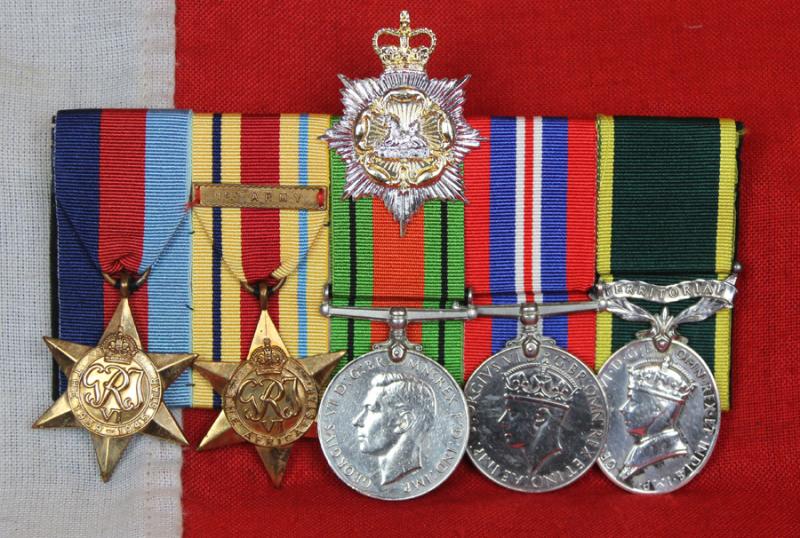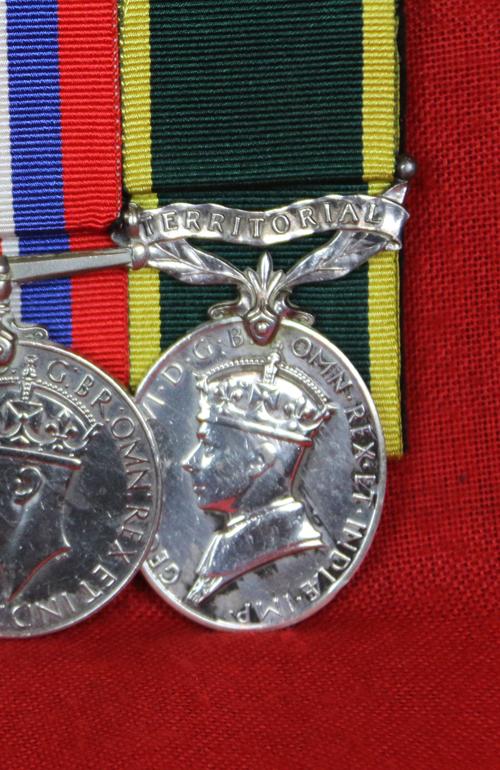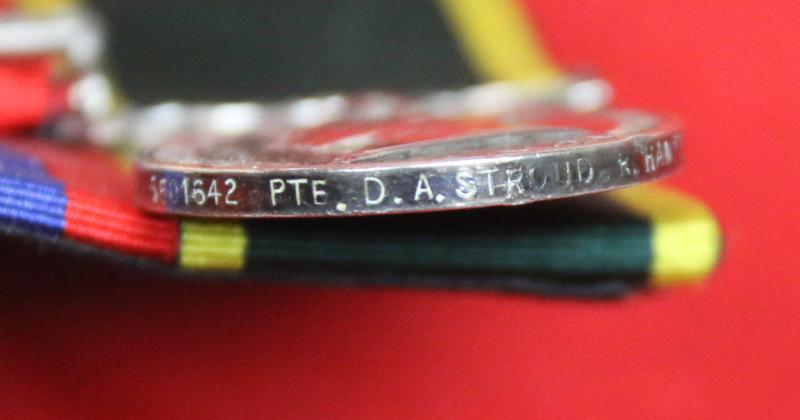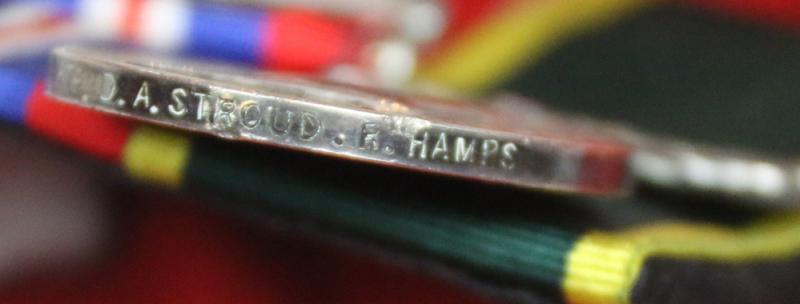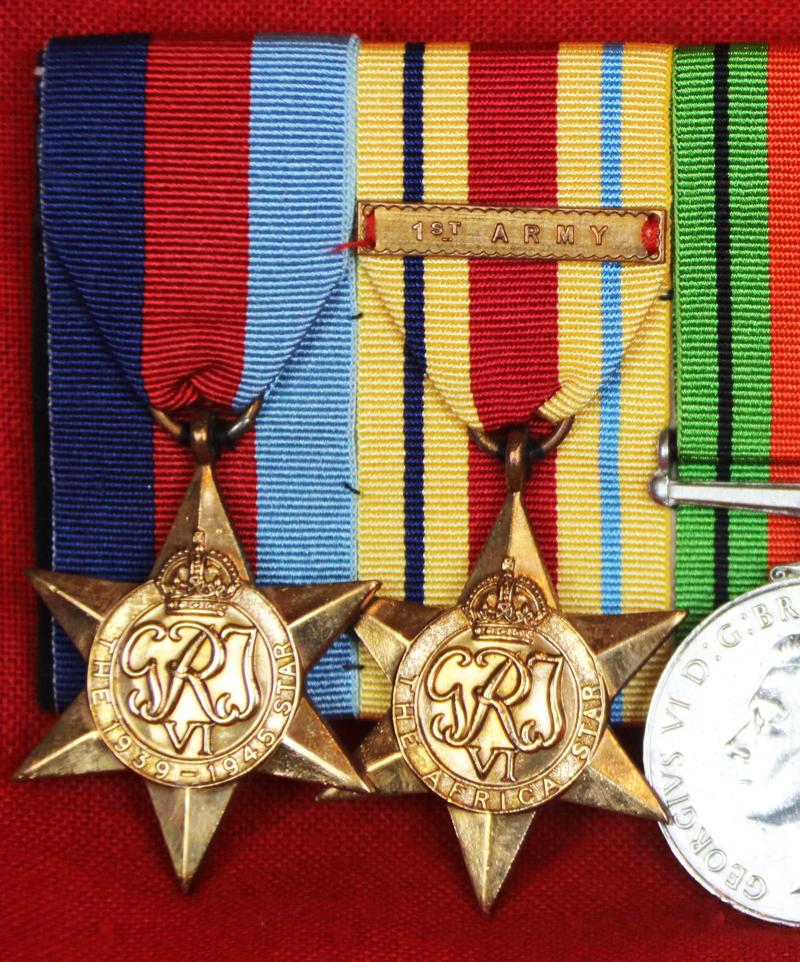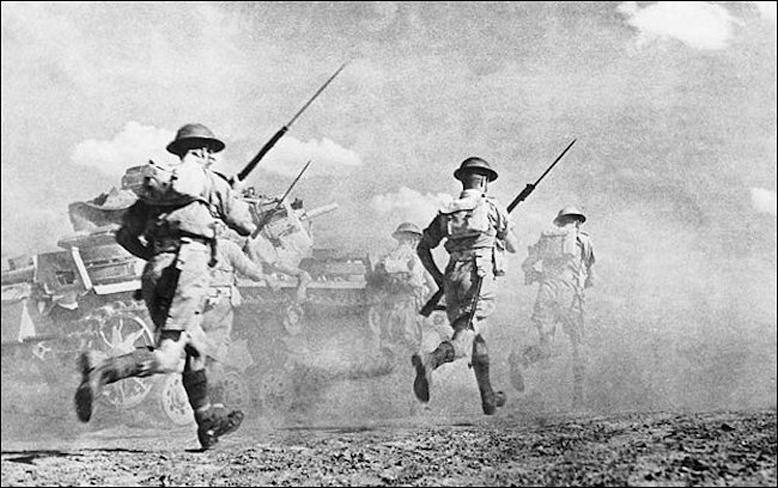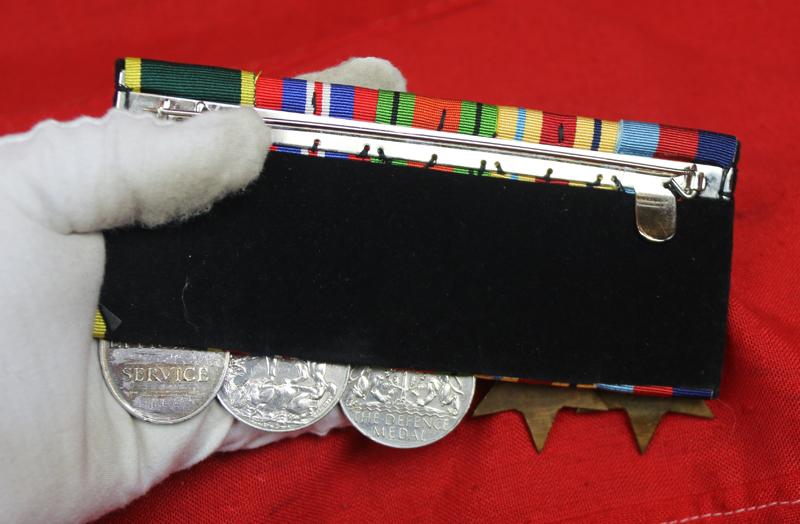1st Army WW2 Hampshire Regiment 5 Medal Group With Territorial Named Medal
1939-45 Star Afrika Star 1st Army Bar, Defence Medal War Medal and Territorial Efficient Service Medal named Hampshire regiment with post 1953 cap badge.
The British First Army was reformed during the Second World War. It was formed to command the American and British land forces which had landed as part of Operation Torch, the Allied invasion of French North Africa, in Morocco and Algeria on 8 November 1942. It was commanded by Lieutenant-General Sir Kenneth Anderson. The First Army headquarters was formally activated on 9 November 1942 when Anderson arrived in Algiers to assume command of the redesignated Eastern Task Force.[3]
The First Army initially consisted of American and British formations only. After the surrender of French forces following the German abrogation of their armistice agreement with Vichy France, French units were also added to the First Army's order of battle. It eventually consisted of four corps, the US II Corps, the British V Corps, British IX Corps and French XIX Corps.
After the landings, Anderson's forces rushed east in a bid to capture Tunis and Bizerte before German forces could reach the two cities in large numbers. They failed. Following that lack of success, a period of consolidation was forced upon them. The logistics support for the First Army was greatly improved and bases for its accompanying aircraft greatly multiplied. By the time General Sir Bernard Montgomery's British Eighth Army approached the Tunisian border from the east, following its long pursuit of Generalfeldmarschall Erwin Rommel's forces after El Alamein, the First Army was again ready to strike.
Supported by elements of XII Tactical Air Command and No. 242 Group RAF, the First Army carried the main weight of General Sir Harold Alexander's 18th Army Group's offensive to conclude the Tunisian Campaign and finish Axis forces in North Africa off. The victory was won in May 1943 in a surrender that, in numbers captured at least, equalled Stalingrad. Shortly after the surrender, the First Army was disbanded, having served its purpose
Code: 24071
170.00 GBP

